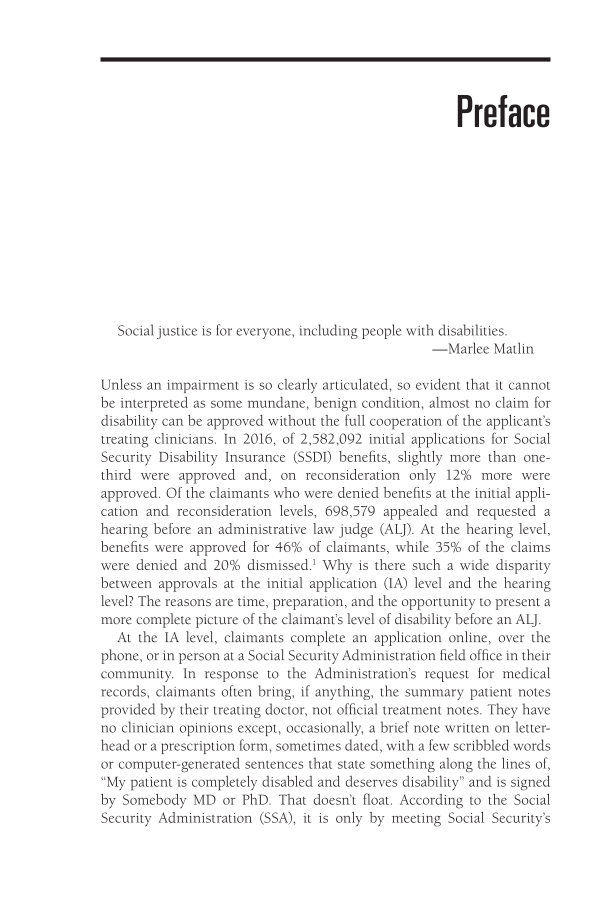Preface Social justice is for everyone, including people with disabilities. —Marlee Matlin Unless an impairment is so clearly articulated, so evident that it cannot be interpreted as some mundane, benign condition, almost no claim for disability can be approved without the full cooperation of the applicant’s treating clinicians. In 2016, of 2,582,092 initial applications for Social Security Disability Insurance (SSDI) benefits, slightly more than one- third were approved and, on reconsideration only 12% more were approved. Of the claimants who were denied benefits at the initial appli- cation and reconsideration levels, 698,579 appealed and requested a hearing before an administrative law judge (ALJ). At the hearing level, benefits were approved for 46% of claimants, while 35% of the claims were denied and 20% dismissed.1 Why is there such a wide disparity between approvals at the initial application (IA) level and the hearing level? The reasons are time, preparation, and the opportunity to present a more complete picture of the claimant’s level of disability before an ALJ. At the IA level, claimants complete an application online, over the phone, or in person at a Social Security Administration field office in their community. In response to the Administration’s request for medical records, claimants often bring, if anything, the summary patient notes provided by their treating doctor, not official treatment notes. They have no clinician opinions except, occasionally, a brief note written on letter- head or a prescription form, sometimes dated, with a few scribbled words or computer-generated sentences that state something along the lines of, “My patient is completely disabled and deserves disability” and is signed by Somebody MD or PhD. That doesn’t float. According to the Social Security Administration (SSA), it is only by meeting Social Security’s
Document Details My Account Print multiple pages
Print
You have printed 0 times in the last 24 hours.
Your print count will reset on at .
You may print 0 more time(s) before then.
You may print a maximum of 0 pages at a time.






























































































































































































































































































































































































































































































































































































